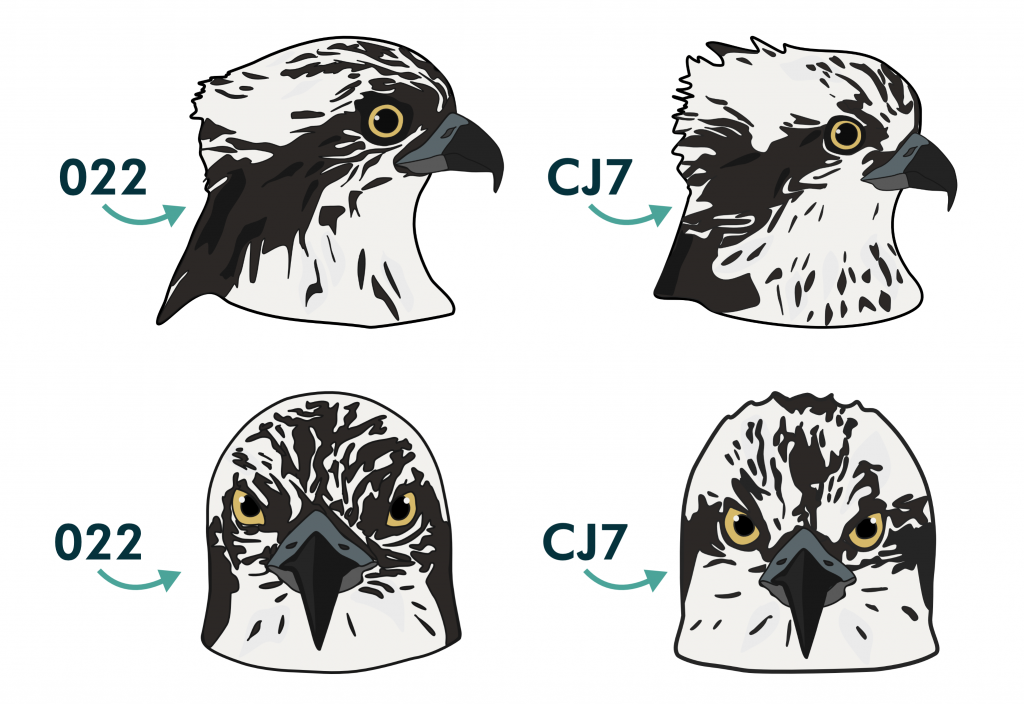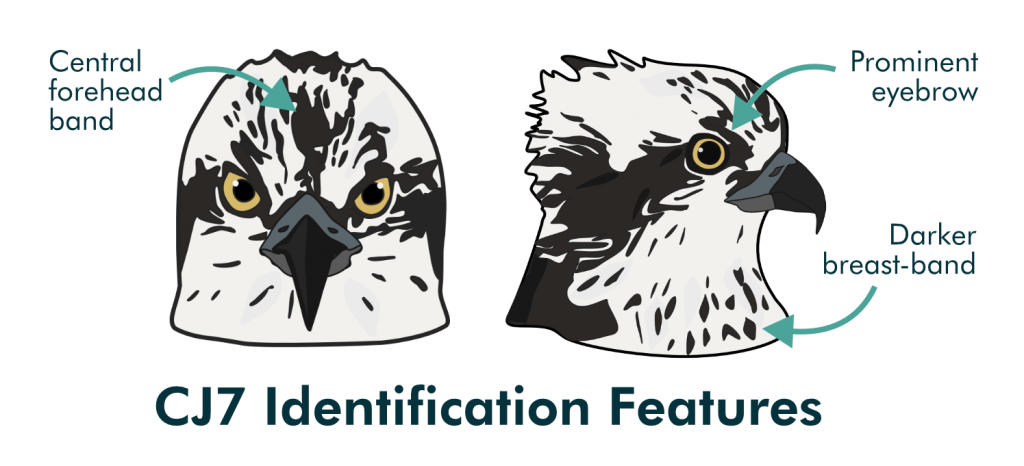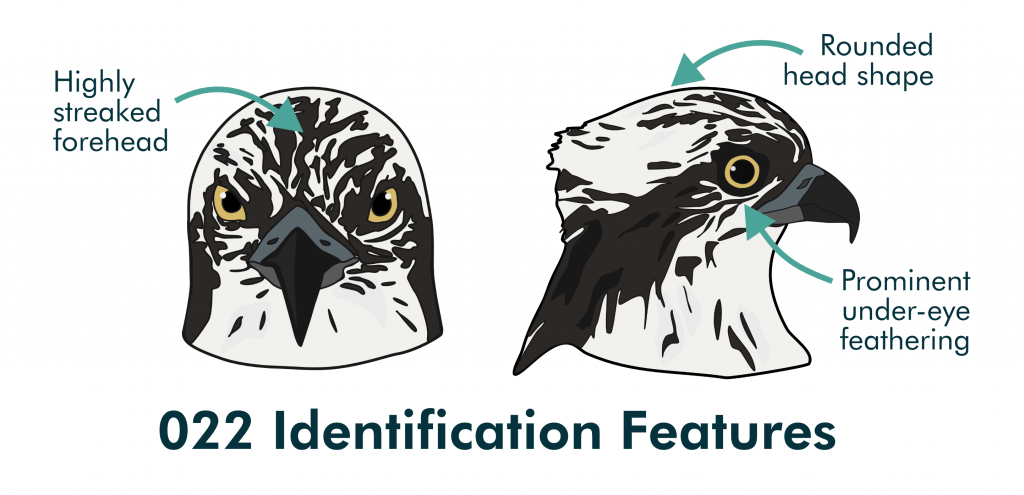The average egg incubation length for Ospreys is 37 days, though it generally ranges between 36 and 40 days. The hatching of their eggs is staggered, as with laying, but this can be affected by a behaviour referred to as delayed incubation. This is where the pair will reduce the initial incubation of the first egg to limit its development early on. This can bring the hatching times closer together, sometimes resulting in a less significant size and development difference between the chicks. In the first few days after hatching, this can be beneficial in helping the younger chicks get their fair share of food, as even a day’s difference in age is noticeable.
As potential hatching draws closer, incubation on the nest is going well, with 022 frequently relieving CJ7 from her incubating duties and spending a considerable amount of incubation himself. They’ve now got their changeovers down to a fine art, swiftly swapping who is incubating and making it more difficult to keep track of activity. Without being able to see their leg rings, we have to use other means of identification to monitor their behaviour. There are common differences between male and female Ospreys that can be useful. For instance, females can be up to 30% larger than males, having a bulkier body shape in comparison to the slenderness of males. With the right perspective, we can see the size difference between CJ7 and 022, but it’s not always obvious with the perspective that the camera offers. Females also tend to have a darker breast-band than males, as well as darker underwing patterning. This is also not often visible on the camera, with the birds tucked down in the nest to incubate the eggs. We therefore identify them most frequently using their head and facial markings.
Comparison of CJ7 and 022’s head markings
Over the last few years, many of us have become familiar with CJ7’s appearance. Her head markings are relatively well-defined and clean cut, with a notable “eyebrow” and central band of dark feathering leading up her forehead. Her facial features therefore appear quite pale on the camera, and, if you use your imagination, she has a square appearance to her head shape. It’s also been noted by keen webcam watchers that CJ7’s eyes are brighter than 022, appearing more lemony yellow, whereas 022’s are darker.
Comparatively, 022 has much darker facial features than CJ7. His forehead is heavily streaked and mottled, with intricate brown feathering extending further back up to his crown. Also noticeable is the prominent pale band beneath his eyes, which are deeper and extend closer towards the beak than on CJ7, which is surprisingly easy to spot at a glance. His head shape appears rounder and smoother than CJ7’s, giving a more oval impression than square.
It’s not always easy to see these features on camera, so we’ve put together these illustrations as a general comparison of the pair’s facial markings. Take them with a pinch of salt as they won’t be 100% accurate, especially as their facial feathers are easily moved and displaced, but they offer a guide to what you are looking for when watching the camera.
As always, thanks for reading and watching. Our next Q & A will be on Monday 23rd May, from 10-11am on the live YouTube chat, so we hope you can join us then! For now, we are looking forward to the end of the month, and hoping that CJ7 and 022 continue to keep up the great work of protecting the nest.
The sunny weather made perfect conditions for our Spring Safari Cruise this morning and also brought out plenty…
Find out moreStill plenty of winter birds around despite the recent summer-like weather with 511 Black-tailed Godwit in Holes Bay…
Find out more© 2025 Birds of Poole Harbour Registered Charity No. 1152615